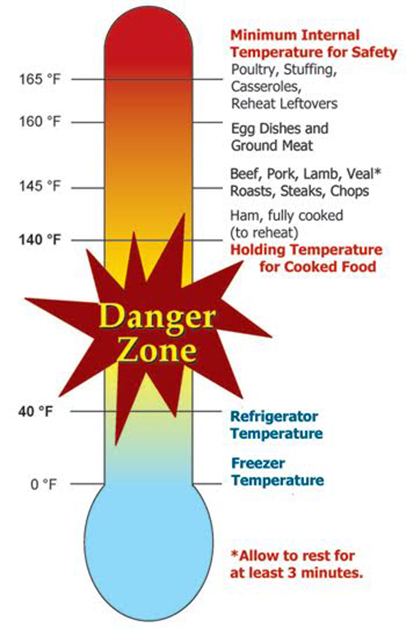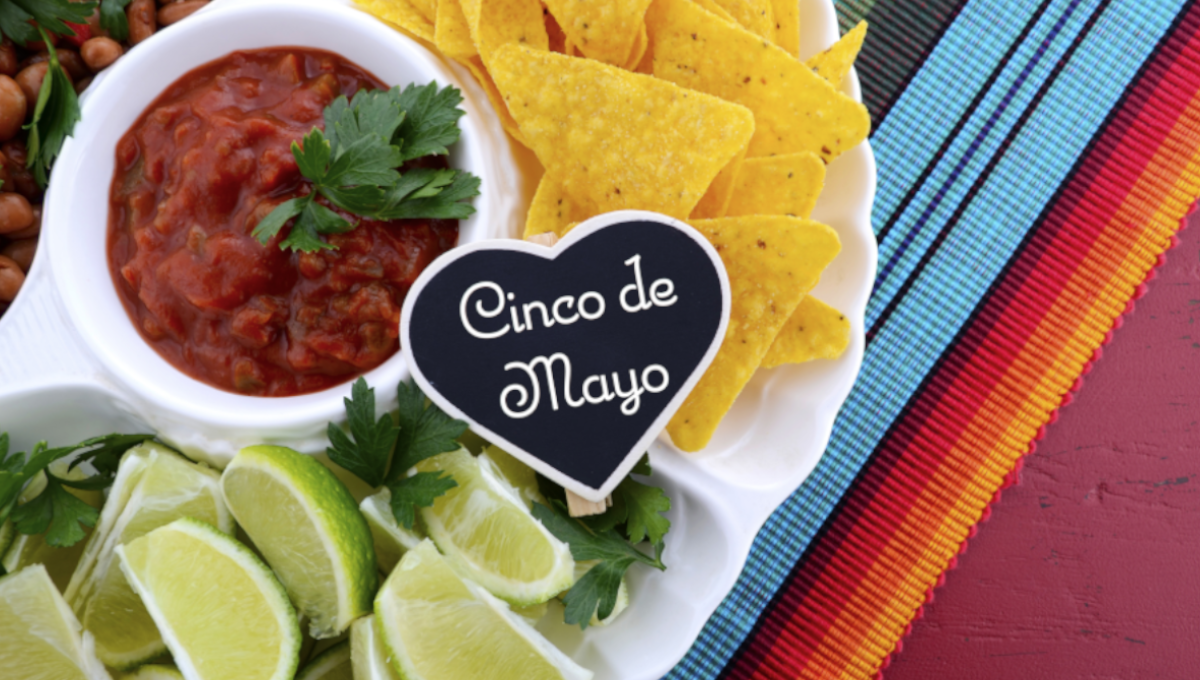Cinco de Mayo is a holiday celebrated in parts of Mexico and the United States in commemoration of the Mexican Army’s victory in 1862 over the French forces of Napoleon III. The holiday is also a way people celebrate their Mexican heritage and share it with other groups.
As with any celebration, food becomes an integral part of the festivities. In the excitement of the holiday, food safety can easily be forgotten. And warm and humid weather combined with outdoor activities, provide the perfect environment for harmful bacteria to multiply on food and result in food poisoning instead of happy memories of the day.
Foodborne illnesses can be prevented by properly handling food at home or outdoors. Here are some tips to keep your Cinco de Mayo celebration food poisoning free:
Shopping and transporting food:
- When shopping for your celebration, buy cold food such as meat and poultry last, right before checkout.
- Separate raw meat and poultry from other food in your shopping cart. To guard against cross-contamination (which can happen when raw meat or poultry juices drip on other food) put packages of raw meat and poultry into plastic bags.
- Plan to drive directly home from the grocery store. You may want to take a cooler with ice for perishables.
- Always refrigerate perishable food within two hours (refrigerate within one hour when the temperature is above 90 degrees F).
- At home, place meat and poultry in the refrigerator immediately.
- Freeze poultry and ground meat that won’t be used in one or two days; freeze other meat within four to five days.
Thaw safely:
- Completely thaw meat and poultry before grilling so it cooks more evenly. Use the refrigerator for slow, safe thawing or thaw sealed packages in cold water.
- For quicker thawing, you can defrost the food in a microwave if it will be placed immediately on the grill.
- Marinate food in the refrigerator, not on the counter.
- Poultry and cubed meat or stew meat can be marinated up to two days. Beef, veal, pork and lamb roasts, chops and steaks may be marinated up to five days.
- If some of the marinade is to be used as a sauce on the cooked food, reserve a portion of the marinade before putting raw meat and poultry in it. However, if the marinade used on raw meat or poultry is to be reused, make sure to let it come to a boil first to destroy any harmful bacteria.
Heading out:
- When carrying food to another location, keep it cold to minimize bacterial growth.
- Use an insulated cooler with sufficient ice or ice packs to keep the food at 40 degrees F or below.
- Pack food right from the refrigerator into the cooler immediately before leaving home.

Keep cold food cold:
- Keep raw meat and poultry refrigerated until ready to use. Only take out the meat and poultry that will immediately be placed on the grill.
- When using a cooler, keep it out of direct sun by placing it in the shade or under a shelter. Avoid opening the lid too often, which lets cold air out and warm air in.
- Pack beverages in one cooler and perishables in a separate cooler.
- Avoid packing raw meat, poultry or seafood with any other food.
Keep it clean:
- Be sure there are plenty of clean utensils and platters.
- To prevent foodborne illness, use separate platters and utensils for raw and cooked meat and poultry.
- Harmful bacteria present in raw meat and poultry, as well as meat and poultry juices, can contaminate safely cooked food.
- If you’re eating away from home, find out if there’s a source of clean water. If not, take water for preparation and cleaning. Or, pack clean cloths or moist towelettes for cleaning surfaces and hands.
Cook thoroughly:
- Cook food to a safe minimum internal temperature to destroy harmful bacteria.
- Meat and poultry cooked on a grill often browns very fast on the outside. Use a food thermometer to be sure the food has reached a safe minimum internal temperature.
- It is important to remember that color is not a reliable indicator of doneness. The only way to know whether your meat is completely cooked is by using a food thermometer to check the internal temperature of items such as burgers.
 Meats:
Meats:
- Cook all raw beef, pork, lamb and veal steaks, chops and roasts to a minimum internal temperature of 145 degrees F as measured with a food thermometer before removing meat from the heat source.
- For safety and quality, allow meat to rest for at least three minutes before carving or consuming.
Ground meats:
- Cook all raw ground beef, pork, lamb and veal to an internal temperature of 160 degrees F as measured with a food thermometer.
- Cook all poultry to a safe minimum internal temperature of 165 degrees F as measured with a food thermometer.
- Never partially grill meat or poultry and finish cooking later.
Reheating:
- When heating fully cooked meats such as hot dogs, grill to 165 degrees F.
Keep hot food hot:
- After cooking meat and poultry on the grill, keep it hot until served — at 140 degrees F or warmer.
- Keep cooked meats hot by setting them to the side of the grill rack, not directly over the coals where they could overcook.
- At home, the cooked meat can be kept hot in an oven set at approximately 200 degrees F, in a chafing dish or slow cooker or on a warming tray.
Serving the food:
- When taking food off the grill, use a clean platter. Don’t put cooked food on the same platter that held raw meat or poultry. Any harmful bacteria present in the raw meat juices could contaminate safely cooked food.
- In hot weather, above 90 degrees F, food should never sit out for more than one hour.
Leftovers:
- Refrigerate any leftovers promptly in shallow containers.
- Discard any food left out more than two hours, or one hour if temperatures are above 90 degrees F.
(To sign up for a free subscription to Food Safety News, click here.)

